The train that crashed at Carmont was a ScotRail High Speed Train (HST) of four Mark 3 coaches with a class 43 power car at each end. These HSTs were originally introduced in 1976 and had a maximum speed of 125mph. Ninety-five HST sets were built, and the fleet has travelled more than 850 million miles and been involved in four serious accidents, including Carmont. Most were recently withdrawn with the introduction of new trains on the East Coast, Midland, and Great Western main lines. The number remaining now constitute less than 2% of the UK train fleet.
The ScotRail HST fleet is restricted to 100mph and comprises of 26 4-coach trains. Before entering service, they were extensively refurbished by Wabtec. This included corrosion repairs and fitting powered sliding doors.
Following the publication of RAIB’s interim and final Carmont reports, some politicians, trade unions and railway commentators called for ScotRail’s HSTs to be scrapped, arguing that the ‘museum pieces’ are unsafe as they did not meet modern standards. This concern arose, in part, due to the particularly violent nature of the Carmont crash as compared to the derailments considered by Rail Engineer’s crashworthiness feature in issue 191 (July-August 2021).
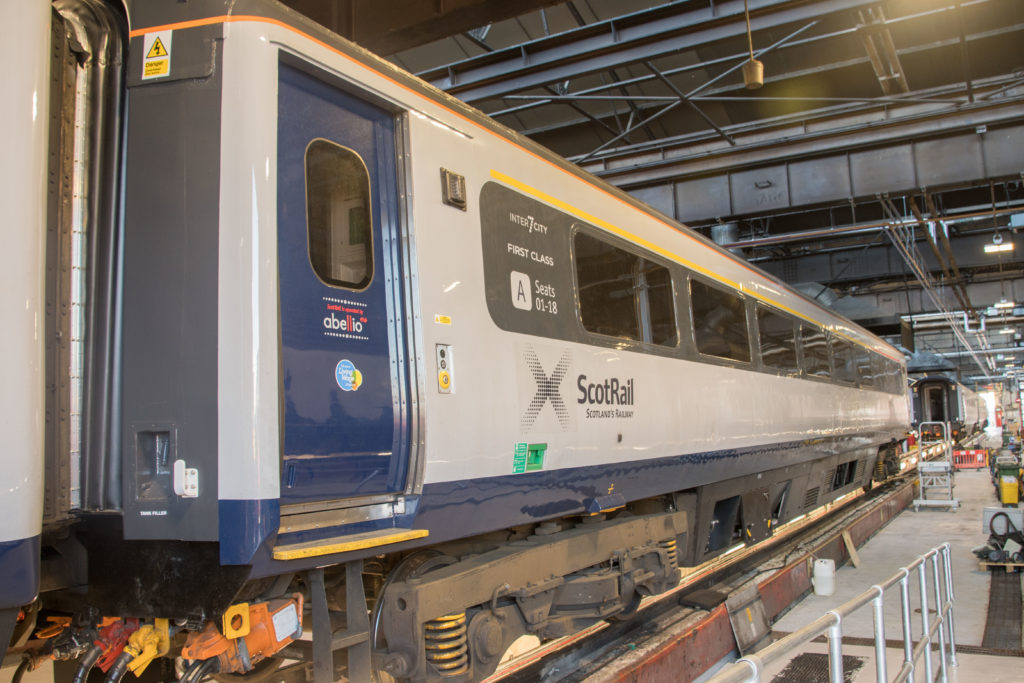
This was largely due to the nature of the terrain beyond the derailment which occurred when the power car’s wheels ran over washout debris. After this, a slight right-hand curve caused the lead bogie to yaw left. When the train reached a bridge, 60 metres beyond the derailment, the power car had deviated over two metres from the track’s centre line. It then stuck and demolished the left-hand bridge parapet.
This resulted in large compressive forces between the power car and lead coach which, together with the vertical height difference and large pitch and yaw angles between these vehicles, caused the lead coach to override the right-hand side of the power car and the coupling to fail. The power car then veered off the bridge, hitting the embankment at a speed of around 45mph, and stopping instantly. Beyond the bridge, the railway runs along a heavily wooded slope with a cutting to the left and an embankment to the right. This constrained the following three coaches as they jacknifed. One then finished down the embankment and one finished across the tracks with the other two on top of it.
The investigation considered whether there would have been a better outcome had the vehicles been constructed to modern crashworthiness standards. This was not the case for the drivers cab for which the report concluded that: “the speed of impact was significantly beyond the collision speeds for which even modern cabs are designed to provide protection for occupants.” Nevertheless, the report recommended that RSSB should review research on fitting secondary impact protection devices for drivers.

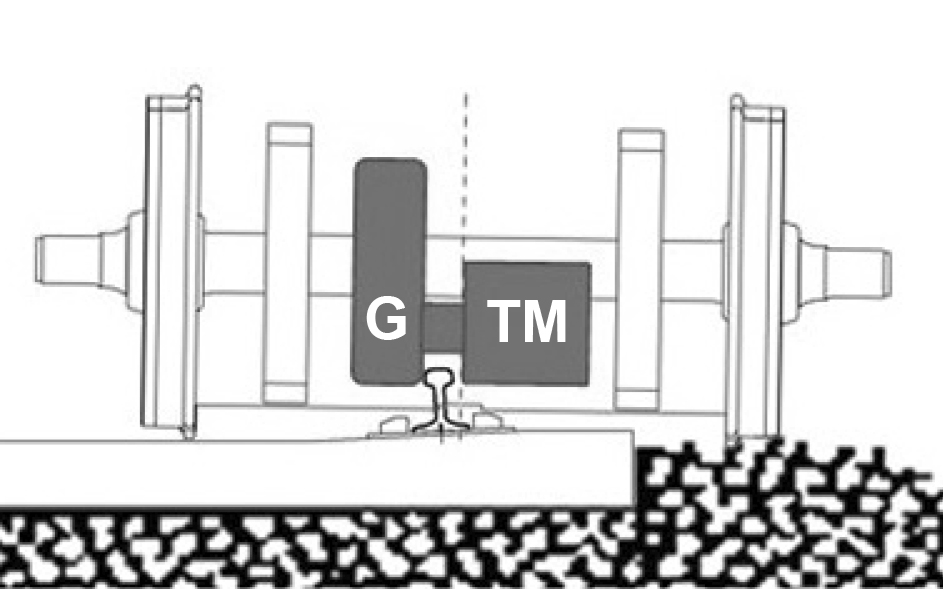
The report noted that, as at the 1997 Southall, 1999 Ladbroke Grove, and 2004 Ufton Nervet collisions, the HSTs have generally performed well. At Carmont, there was only a limited loss of survival space and the coaches resisted passenger spaces penetration during impacts with other vehicles and bogies. Vehicle interiors also performed well. Despite severe movements and roll over, none of the seats and tables became detached except for those in the burn-out section of one coach that had suffered a battery fire, sometime after the initial collision.
In this respect it was recommended that RSSB should investigate alternative battery designs with improved fire-related properties.
Derailment mitigation.
At the time of the derailment, there were no guard rails on the approach to the bridge. These could have avoided the power car deviating about two metres to the left and hitting the bridge parapet which resulted in a particularly destructive chain of events. To be effective, such guard rails would have needed to be at least 35 metres from the bridge.
A Network Rail standard requires that consideration should be given to the provision of guard and gathering rails when track is renewed at locations where the consequence of a derailment is high. If fitted, guard rails shall extend 18 metres from the location at risk i.e., less than the 35 metres to be effective at Carmont. The track at Carmont was last renewed between 1966 and 1970 before this standard applied.

At locations where there are no guard rails or containment kerbs, excessive deviation from the track could also be prevented by bogie mounted equipment not necessarily designed for the purpose. At Watford in 2016, an axle-mounted gearbox kept a derailed train close to the track.
Recommendations to address the above were that Network Rail, RDG, and RSB should develop a long-term derailment mitigation strategy which considers infrastructure and rolling stock features that could guide derailed trains and that it should also review the provision of guard rails and other derailment containment.
Modern crashworthiness standards
Not surprisingly, the 40+ years old train, had some corrosion, some of which had been repaired when the coaches were refurbished for use by ScotRail. In the coach that had overridden the power car, there had been loss of survival space where end pillars sheared off their bases. Although these pillars had been corroded, RAIB analysis showed that, even with no corrosion, the large forces involved could have been sufficiently high to shear the pillars.
HSTs are fitted with ‘Alliance’ buckeye-type couplers which did not withstand the forces and relative vehicle movements of the derailment. All these couplers failed except the one between the last coach and trailing power car. Modern standards require more robust couplers which the RAIB report considers would have led to less vehicle scatter although it acknowledges that there are limits in the ability of couplers to keep coaches together. Furthermore, research reports have shown that couplers designed to absorb energy in low-speed derailments could result in a derailment at higher speeds due to excessive yawing and pitching.
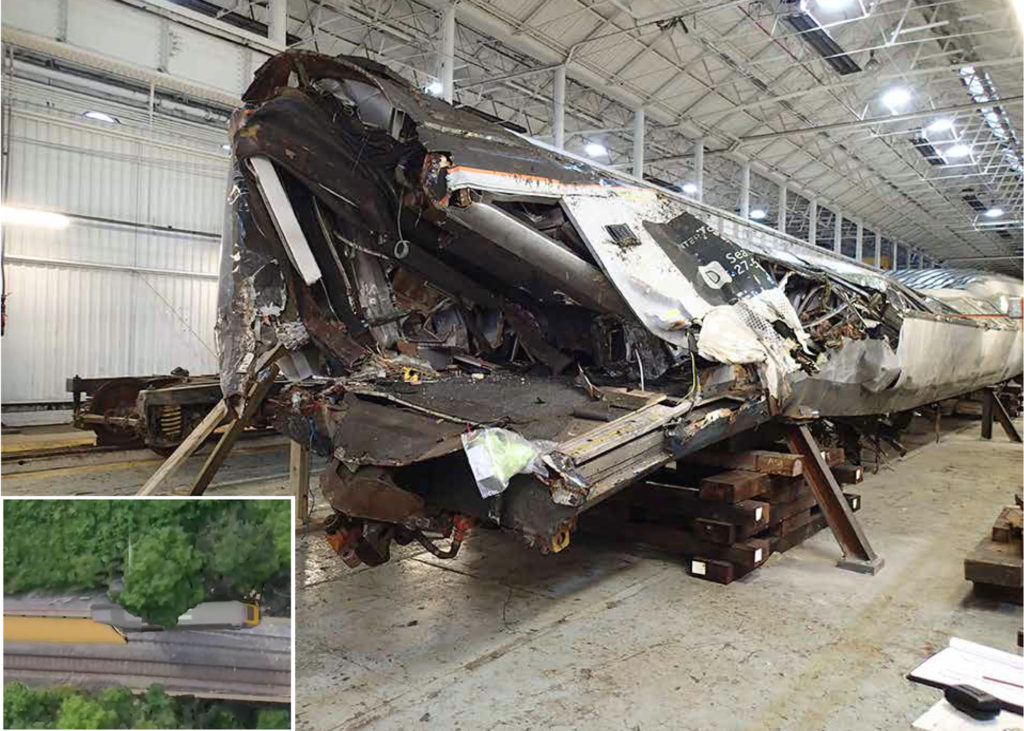
Modern stock also has anti-climb features intended to prevent the over-riding that occurred between the leading power car and following coach. However, at Carmont the significant height difference and large pitch and yaw angles between the two vehicles might have rendered any anti climb features ineffective.
Unlike vehicles designed after 1994, Mark 3 coaches do not have any bogie retention. Hence, all coaches except the last one lost their bogies. The report explains the benefits of bogie retention particularly as a train with bogies could, if not jacknifing, dissipate their energy in a benign way as derailed bogies run through the ballast. The report references RSSB study T118 ‘Whole Dynamic Behaviour in Collisions’ which also concludes that bogies should be retained, as far as is practicable.
However, the study also noted that the required modifications were likely to incur significant costs and concluded that the evidence is not sufficiently conclusive to support retrospective fitting of bogie retention.
To address any additional risk of operating vehicles pre-dating modern standards the report recommended that owners of HSTs should assess additional risk from lack of modern crashworthiness features and identify reasonably practical measures to control any identified additional risks. They should also consult with owners of pre-1994 rolling stock to issue industry guidance on assessing such risks. Though this is initially directed at HST owners, there are many other pre-1994 still in service.
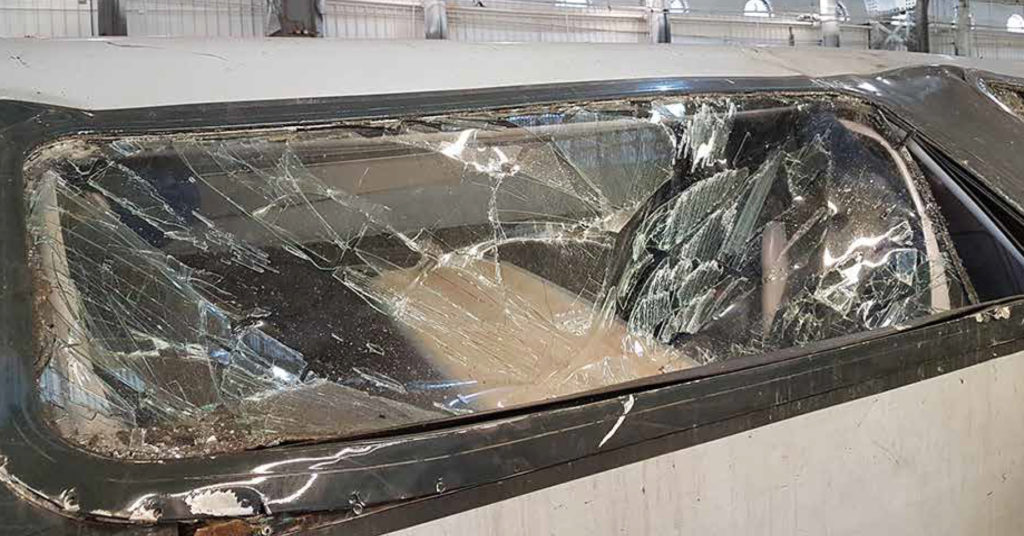
Bogie mounted lifeguards are intended to prevent derailments by deflecting relatively small obstacles. The report suggested that a stronger lifeguard might have moved sufficient washout debris to prevent the derailment but acknowledged that there is no evidence to support this theory. Nevertheless, it recommended that HST owners should consider strengthening bogie-mounted lifeguards.
Of concern was that 22 of the 61 bodyside windows were completely broken through with some panes shattered into large pieces rather than small dice-sized pieces as intended. Yet the windows were designed with laminated glass to comply with modern standards designed for passenger containment.
They had failed due to the glazing unit being distorted due to the vehicle’s deformation. Such failures are not covered by current standards. The report also noted that the glazing unit design was constrained as it had to fit within the existing frames. Hence it recommended that RSSB should investigate performance on windows during the crash to determine if changes are required to standards.
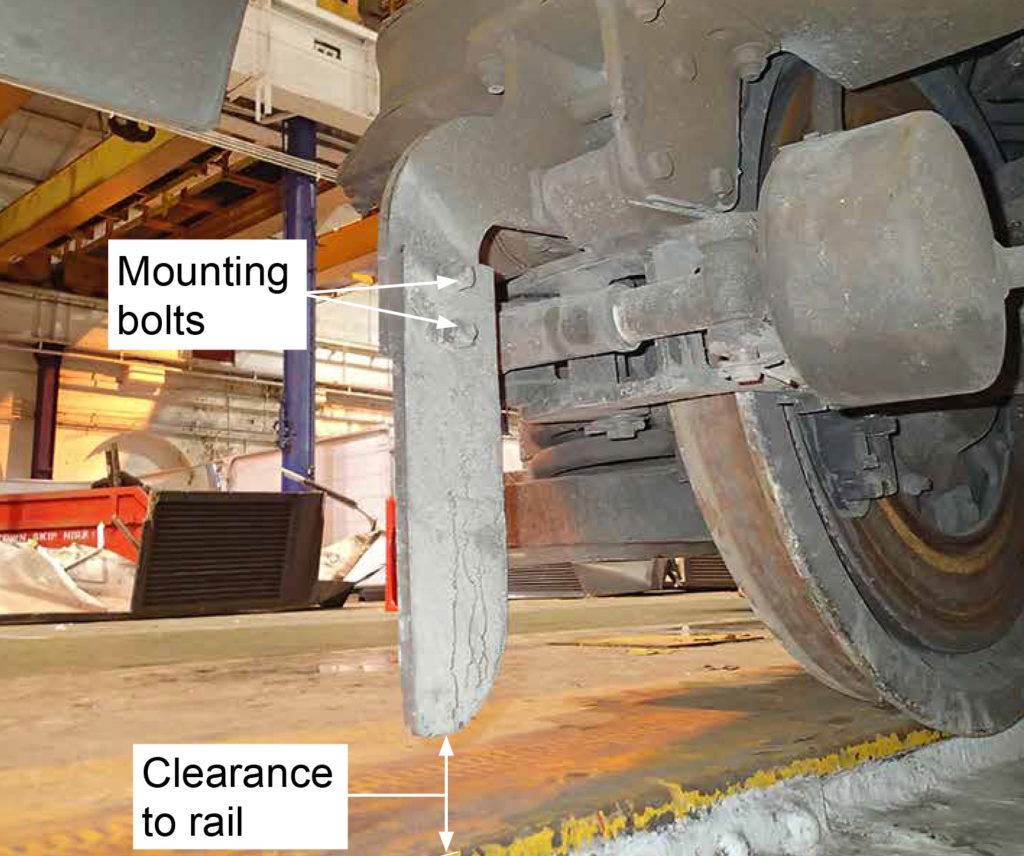
Though no one was injured by them, the single seat folding tables had a particularly sharp corner so a recommendation was made that Angel trains and ScotRail should review the design of the HST’s bodyside mounted folding tables.
Are old trains unsafe?
Perhaps the most controversial aspect of RAIB’s Carmont report is that some believe it shows the 40+ year old HST trains are unsafe. To understand this, fellow writer Malcolm Dobell and I had a discussion with RAIB’s chief inspector designate, Andy Hall and crashworthiness specialist, Winston Rasaiah.
The RAIB report concluded that: “more likely than not that the outcome would have been better if the train had been compliant with modern crashworthiness standards.” We discussed this as, given the enormous unpredictable forces and the unfavourable terrain, in some circumstances there was potential for modern features to make the outcome worse. For example, had the coupler not broken the entire train might have followed the power car off the bridge. While it is not possible to state what might have happened in such hypothetical scenarios, on balance RAIB felt that its conclusion was reasonable given the benefits of, for example, bogie retention.
The report noted that although the more modern train involved in the 2007 Grayrigg derailment had more kinetic energy than the Carmont derailment, there were fewer casualties. We felt this comparison was misleading as the terrain at Grayrigg was more benign and that kinetic energy, in itself, does no harm. Winston accepted the point about kinetic energy and agreed that it is the rate at which energy is dissipated that has a direct effect on potential injuries. However, he felt it was important for the report to make the kinetic energy comparison.
We also discussed whether corrosion on such old trains might have made matters worse. Winston considered that any corrosion would have affected the strength of the coach though he advised that RAIB did not consider that the corrosion found made the train grossly inferior and it was not possible to say that it made the coach non-compliant with standards. Furthermore, he considered that the forces on the pillar were of the order of many tonnes. In this respect the report recommended that owners of Mark 3 coaches and other rail vehicles susceptible to corrosion should review maintenance plans to ensure that vehicles comply with their original structural design load.
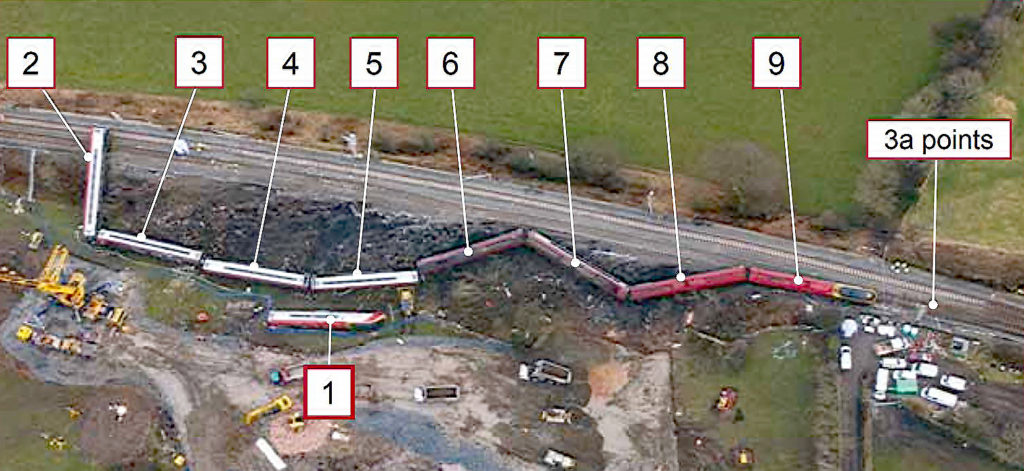
Of necessity, RAIB reports are highly detailed, so it is possible to quote selectively from them. Andy noted that: “we have to write the report as we see fit and how people interpret it is up to them. RAIB has not said that the Mark 3 coach is unsafe, far from it.”
It was clear from our discussion that RAIB is certainly not calling for the HSTs to be withdrawn from service. Instead, its view is that the risks of operating trains pre-dating modern standards need to be reviewed and the reasonable practicability of additional risk control measures assessed.
This considered view is one that needs to be understood, as do the many lessons from RAIB’s thorough Carmont report. Grasping these lessons and implementing the report’s recommendations are the best way to improve safety after the tragic Carmont accident.

